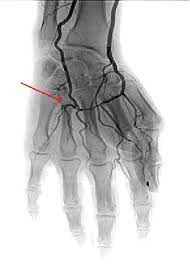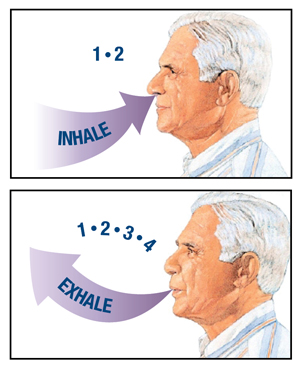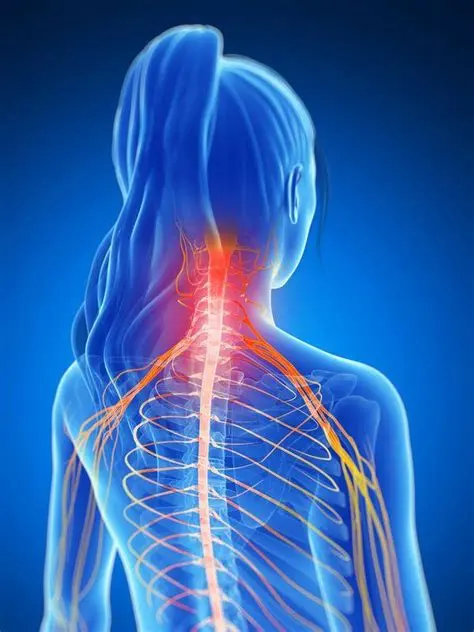BENING PAROXYSMAL POSITION VERTIGO
Table of Contents
DEFINATION:
Benign Paroxysmal Positional Vertigo (BPPV) is the most common cause of vertigo, which is a symptom of the condition. Though not fully understood, BPPV is thought to arise due to the displacement of otoconia (small crystals of calcium carbonate) from the maculae of the inner ear into the fluid-filled semicircular canals.
These semicircular canals are sensitive to gravity and changes in head position can be a trigger for BPPV. The posterior canal is the most commonly affected site, but the superior and horizontal canals can be affected as well. It should be noted that the superior canal is sometimes also referred to as the anterior canal and the horizontal canal is sometimes referred to as lateral canal.
INTRODUCTION:
BPPV is a peripheral vestibular disorder characterized by short episodes of mild to intense dizziness and influenced by specific changes in head position. BPPV is the most common cause of vertigo accounting for nearly one-half of patients with peripheral vestibular dysfunction. It is often self-limiting, but in some cases may become chronic and greatly affect an individual’s quality of life.
CAUSES:
The most common cause of BPPV is idiopathic. However, the vestibular system of the inner ear can also undergo degenerative changes as one ages which can attribute to a potential cause of BPPV. Under age 50, head injury is a common cause. Vestibular viruses and Meniere’s disease also play a role. BPPV can also be a result of surgery due to prolonged supine positioning and possible trauma to the inner ear.
- Risk factors include :
• Female sex
•Hypertension (HTN)
• Hyperlipidemia
• Cerebrovascular disease
• Menopause
• Allergies
• Migraine
• Chronic Obstructive Pulmonary Disease (COPD)
• Surgical procedure such as a cochlear implant
• Infection
PREVALENCE:
- Dizziness is the complaint in 5.6 million clinical visits in the United States per year, and between 17 and 42 percent of these patients are diagnosed with BPPV.
- Female to male ratio is 3:1.
- The recurrence rate for individuals at one year following initial bout of BPPV is 15% and at 5 years the recurrence rate is 37-50%.
- Individuals with a clinical diagnosis of anxiety are 2.7 times more likely to develop BPPV.
- Unilateral posterior canal is the most commonly affected canal in BPPV with 90% of all BPPV diagnosis.
- Unilateral horizontal canal affects 5-15% of all BPPV diagnosis. Within a horizontal canal diagnosis, 2/3 of the cases are geotropic while 1/3 of the cases are apogeotropic.
- Anterior canal affects 1-2% of all BPPV diagnoses, which is the least common.
- The lifetime prevalence is 2.4 percent.
CLINICAL PRESENTATION:
- Symptoms :
Vertigo: Spinning sensation (not lightheadedness or feeling off-balance.)
Short duration (Paroxysmal): Lasts only seconds to minutes (usually less than 60 seconds)
Positional in onset: only induced by a change in position
Nausea
Visual disturbance: It may be difficult to read or see during an attack due to the associated nystagmus.
Pre-Syncope (feeling faint) or Syncope (fainting)
Vomiting is uncommon, but possible.
Loss of balance Symptoms are considered:
Mild: inconsistent positional vertigo
Moderate: frequent positional vertigo attacks with disequilibrium between vertigo attacks
Severe: vertigo with most head movements, which can appear as continuous vertigo. Individuals with BPPV can have symptoms that last days, weeks, months or years before it is resolved.
- Signs :
Activities that bring about the signs and symptoms of BPPV can vary from person to person, but are almost always brought on by a change in the position of the head. These positional changes may include:
- Moving the head to one side
– example: when turning in bed
- Tilting the head backwards to look up
– example: hanging up washing or taking something from the top shelf
- Bending over
– example: to tie shoe laces
The typical features of a patient presenting with BPPV include:
40 years of age
Vertigo and dizziness lasting one minute or less
One or more of the signs/symptoms listed aboveOnset of symptoms during activities which involve a change in the position of the head
Limitations or modification of movements, to avoid provoking symptoms
History of falls resulting from symptomatic episodes
Rotatory (torsional) nystagmus, where the top of the eye rotates towards the affected ear in a beating or twitching fashion.
DIFFERENTIAL DIAGNOSIS:
- Otological disorders include:
Meniere’s disease
Vestibular neuritis
Labyrinthitis
Superior canal dehiscence syndrome
Post-traumatic vertigo
- Neurological disorders include:
Migraine-associated dizziness
Vertebrobasilar insufficiency
Demyelinating diseases
Posterior circulation stroke
- Other possible causes are:
Anxiety or panic disorders
Cervicogenic vertigo
Medication side effects
Postural hypotension
PHYSIOTHERAPY MANAGEMENT:
Two treatments have been found effective for relieving symptoms of posterior canal BPPV:
- Canalith repositioning procedure (Epley maneuver):
Employs gravity to move calcium build-up that causes the condition
Can also be performed by trained otolaryngologists, neurologisists, chiropractors or audiologists
- Liberatory or Semont maneuver:
(1) EPLEY MANEUVER :
- Patient starts in long sitting, head rotated 45 degrees to affected side
Patient rapidly reclined to supine position with neck slightly extended. Hold position for 30 seconds, or until nystagmus and dizziness subside - Rotate head 90 degrees to opposite side. Hold position for 20 seconds, or until nystagmus and dizziness subside
- Patient rotated 90 degrees from supine to side-lying. Hold position for 20 seconds, or until nystagmus and dizziness subside
- Bring patient up into short-sitting
- May need to complete this maneuver 1 to 3 visits complete resolution of symptoms.
(2) LIBERATORY OR SEMONT MANEUVER :
- Patient sits in short sitting, head rotated 45 degrees towards unaffected ear
- Examiner places one hand under the bottommost shoulder while the other hand supports the nect
- Patient rapidly moves into side-lying to the affected side (face should be oriented towards ceiling). Hold this position for 30 seconds
- Without any head movement, patient is to move to side-lying on opposite side of the body (face oriented towards bed). Hold this position for 30 seconds
(3) LEMPERT MANEUVER :
Treatment for horizontal/lateral canal BPPV
- Patient lie supine on examination table, affected ear down
Quickly turn the head 90 degrees towards unaffected side facing up
Wait 15-20 seconds between each head turn - Turn the head 90 degrees so affected ear is up
- Have patient tuck arms to chest, roll patient into prone
- Have patient turn on side as you roll their head 90 degrees ( return to original position, affected ear down)
- Reposition patient so that they are facing up into sitting position
(4) GUFONI MANEUVER :
Treatment for horizontal/lateral canal BPPV
- Patient taken from sitting to side-lying on affected or unaffected side
Geotropic nystagmus: unaffected
Apogeotropic: affected - Turn patient head quickly towards ground (45-60 degrees), hold in this position for 2 minutes
- Patient returns to sitting with head maintained in that position
(5) HABITUATION TECHNIQUE :
- Avoid quick spins or movements that provoke vertigo
- Sleep in semi-recumbent position for next 2 nights following Epley’s technique (use a recliner or stack of pillows)
- Avoid sleeping on affected side
- Try keep head upright during day and avoid all supine activities
- After being conservative for a week, start to place head (in controlled environments) in vertigo provoking positions
(6) BRANDANT DEROFF EXERCISE :
- The Brandt-Daroff exercises are a series of particle repositioning exercises that can be performed without a qualified health professional present and are easily taught to the patient. While beneficial, these exercises are more time consuming than other forms of treatment. They are completed by the patient in bed, 3 sets a day for 2 weeks and aim to help reduce the chance of reoccurrence of BPPV and promote the loosening of canaliths.Radke et al. found that when these exercises are performed as the only form of treatment, they were successful at relieving the symptoms of BPPV in only 25% of individuals after one week of administration. The Brandt-Daroff exercises have been found to be a beneficial adjunct treatment in the symptomatic relief of BPPV.
- STEPS FOR BRANDT-DAROFF EXERCISE :
- Sit upright on bed
- Lie down onto side, taking no more than 1-2 seconds to do this
- Keep head looking up at 45 degree angle, remain on side for 30 seconds or until dizziness subsides
- Return to upright position and wait for 30 seconds, or until dizziness subsides
- Lie down onto opposite side, taking no more than 1-2 seconds to get into position
- Keep head looking up at 45 degree angle, remain on side for 30 seconds or until dizziness subsides
- Stay down for another 30 seconds, or until dizziness subsides
- Return to upright position and wait for 30 seconds, or until dizziness subsides
Devices such as a head over heels “rotational chair” are available at some tertiary care centers. Home devices, like the DizzyFIX, are also available for the treatment of BPPV and vertigo.
(7) VESTIBULAR REHABILITATION EXERCISES :
- Vestibular rehabilitation exercises are commonly included in the treatment of BPPV and are designed to train the brain to use alternative visual and proprioceptive cues to maintain balance and gait. It has been shown that these exercises improved nystagmus, postural control, movement-provoked dizziness, the ability to perform activities of daily living independently, and levels of distress. While no single vestibular rehabilitation exercise has been shown to reduce the symptoms of BPPV, a program of therapies that can include self-administered repositioning maneuvers, gaze stabilization exercises, falls prevention training, and patient education may be beneficial in reducing the symptoms of BPPV and improve quality of life.
- The evidence supporting the efficacy of vestibular rehabilitation exercises in reducing symptoms of BPPV is lacking. Steenerson et al.found that Epley’s maneuver administered by a health care practitioner was a better treatment technique than vestibular rehabilitation exercises. Vestibular exercises were, however deemed to be better than no treatment at all. No single form of vestibular rehabilitation exercise has been found to be superior and exercises appear to have a greater effect when performed together, rather than as single exercises alone.
(8) CAWTHRONE-COOKSEY EXERCISES :
- The Cawthorne-Cooksey exercises aim to relax the neck and shoulder muscles, train eyes to move independently of the head, and to practice balance and head movements that cause dizziness. The exercises consist of a series of eye, head, and body movements, in increasing difficulty, which aim to provoke symptoms. The goal of these exercises is to fatigue the vestibular response and force the central nervous system to compensate by habituation to the stimulus.
- Acquiring a good knowledge of the pathophysiology, diagnosis and treatment techniques involved in the management of BPPV allows for early diagnosis and effective intervention. It is necessary for us, as physiotherapists to recognize BPPV in the initial assessment; avoiding unnecessary clinical tests and hospital visits being required before BPPV is diagnosed. As physiotherapists are often the first point of contact for these patients, it is vital that we have the skills to recognize BPPV. Once a diagnosis has been made, treatment can begin, this ensures that the patient recovers as quickly as possible, and minimizes the impact of BPPV on their life.
- In reality, diagnosis of BPPV is relatively straightforward when patient’s history and correct diagnostic tests are performed in the physical assessment. The treatment of BPPV, as described in this learning package, is also simple to perform and is a cost and time effective method of management. The impact of falls and hospital admissions resulting from BPPV is costly both in terms of healthcare bills but also on patients’ physical health and quality of life. At present, BPPV is being undiagnosed too frequently, and is often only recognized upon admittance due to a secondary injury caused by a fall. By physiotherapists having the appropriate knowledge and developing their skills in the diagnostic and treatment techniques, BPPV can be managed more effectively.
- Appropriate intervention by physiotherapists and other healthcare professionals can help to reduce the falls associated with BPPV and as a result prevent unplanned hospital admissions.
- Due to the high recurrence rate of BPPV, it is recommended that patients are educated as to how to self-manage the condition so that if it does present itself again, the patient is able to treat themselves accordingly. A longitudinal study suggested that BPPV has a recurrence rate of between 40-50% in a 5 year follow up following treatment which was initially successful, therefore patients should be taught how to self-manage their condition, and therefore minimize the likelihood of readmission.
- If a patient is not seen until after a fall, it is imperative to discover what led to the fall, possibly getting reports from other witnesses such as family members who may have a better recollection of the incident. We, as physiotherapists have a huge role in falls prevention and need to be able to make an informed judgment for referral to falls prevention teams, especially if the patient has recurring BPPV.
- Post fall assessments have resulted in significantly fewer falls through the detection of risk factors and previously undetected conditions, thus reducing hospital admissions.






3 Comments